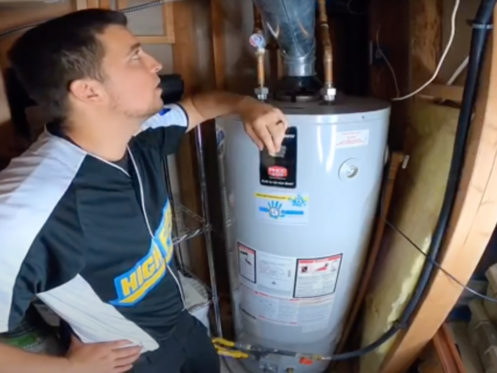Caring for Your Home's Hot Water System: Important Tips
Additional InformationAlmost everyone has got their unique concepts with regards to Tips For Maintaining Your Hot Water Heater.

Warm water is necessary for everyday comfort, whether it's for a revitalizing shower or cleaning meals. To ensure your hot water system runs successfully and lasts much longer, regular upkeep is vital. This post offers useful tips and understandings on exactly how to maintain your home's warm water system to avoid disturbances and pricey repair services.
Introduction
Keeping your home's hot water system could appear challenging, yet with a few basic steps, you can guarantee it operates smoothly for years ahead. This overview covers everything from comprehending your hot water system to DIY upkeep tips and recognizing when to contact professional help.
Importance of Maintaining Your Warm Water System
Regular upkeep not just expands the lifespan of your warm water system but likewise guarantees it runs efficiently. Disregarding maintenance can cause decreased effectiveness, greater energy costs, and even premature failing of the system.
Signs Your Hot Water System Demands Maintenance
Recognizing when your warm water system needs interest can protect against major problems. Keep an eye out for signs such as irregular water temperature level, unusual sounds from the heating system, or rusty water.
Comprehending Your Warm Water System
Prior to diving into maintenance jobs, it's helpful to understand the fundamental parts of your warm water system. Normally, this consists of the water heater itself, pipes, anode rods, and temperature controls.
Regular Monthly Upkeep Tasks
Normal monthly checks can assist capture small concerns prior to they rise.
Purging the Water Heater
Flushing your hot water heater eliminates debris build-up, improving efficiency and prolonging its life.
Monitoring and Changing Anode Rods
Anode rods stop rust inside the tank. Inspecting and replacing them when worn is vital.
Evaluating and Readjusting Temperature Level Setups
Adjusting the temperature level settings guarantees optimal performance and safety.
DIY Tips for Maintenance
You can perform a number of upkeep tasks yourself to keep your warm water system in top problem.
Checking for Leaks
Regularly check pipes and connections for leaks, as these can bring about water damages and greater expenses.
Examining Stress Alleviation Valves
Examining the stress relief valve ensures it operates appropriately and protects against extreme pressure buildup.
Insulating Pipes
Insulating warm water pipelines minimizes warm loss and can save power.
When to Call a Specialist
While do it yourself upkeep is beneficial, some concerns call for expert know-how.
Complicated Concerns Needing Expert Help
Instances consist of major leaks, electric troubles, or if your hot water heater is regularly underperforming.
Routine Specialist Maintenance Advantages
Professional maintenance can consist of comprehensive assessments, tune-ups, and ensuring compliance with safety and security standards.
Conclusion
Regular upkeep of your home's hot water system is essential for performance, longevity, and price savings. By complying with these suggestions and recognizing when to seek specialist assistance, you can ensure a trusted supply of hot water without unexpected disturbances.
How to Maintain an Instant Hot Water Heater
Before tinkering with your hot water heater, make sure that it’s not powered on. You also have to turn off the main circuit breaker and shut off the main gas line to prevent accidents. Also turn off the water valves connected to your unit to prevent water from flowing into and out of the appliance. 2. When you’re done, you have to detach the purge valves’ caps. These look like the letter “T†and are situated on either side of the water valves. Doing so will release any pressure that has accumulated inside the valves while at the same time avoid hot water from shooting out and burning your skin. 3. When the purge valves’ caps are removed, you have to connect your hosing lines to the valves. Your unit should have come with three hoses but if it didn’t, you can purchase these things from any hardware or home repair shops. You can also get them from retail stores that sell water heating systems. Read the user’s manual and follow it to complete this task properly. When the hosing lines are connected, open the purge port’s valves. 4. You should never use harsh chemical cleaners or solutions when cleaning your unit. Make use of white vinegar instead. It should be undiluted and you’ll probably use about 2 gallons. 5. Now flush your water heater. This task should probably take about 40 minutes. We can’t give you specific directions for this because the procedure is carried out depending on the type, model and brand of your heater. With that being said, refer to the user’s manual. 6. When you’re done draining the unit, you have to turn off the purge port valves again. Remove the hosing lines that you earlier installed on each of the water valves. Put the valve caps (purge port) back in their respective places and be very careful so as not to damage the rubber discs that are found inside these caps. 7. Now that everything’s back in place, check your user’s manual again to find out how to reactivate your water heating system. 8. Once it is working, turn one of your hot water faucets on just to let air pass through the heater’s water supply pipes. Leave the tap on until water flows smoothly out of it. https://www.orrplumbing.com/blog/2014/september/how-to-maintain-an-instant-hot-water-heater/

I came across that page on How to Maintain Your Water Heater & Prolong its Life when looking around the web. In case you enjoyed our blog entry kindly make sure you remember to pass it around. Many thanks for being here. Please check up our blog back soon.
Visit Page